The Discreet Charm of George Cukor
Film Society of Lincoln Center
The Film Society of Lincoln Center celebrated the end of 2013 with the holiday glitter of an impressive, 26-day, 50-film retrospective of "The Discreet Charm of George Cukor" running from December 13 through January 7, and with a handsome little brochure. Cukor, a New Yorker born of Hungarian Jews who began as a Broadway director then moved to Hollywood, is noted for his taste and elegance, his fine work with actresses, ability to find good scripts and focus on comedies and literary adaptations. The question that emerges is: what really was Cukor's most characteristic work? There may be no obvious answer. See the NY Times article on this survey by Stephen Farber.
Simply as a figure of Hollywood society the pretty obviously yet discreetly gay Cukor was of immense importance. His stylish house and garden were the headquarters for glittering social gatherings where prominent members of the gay subculture partied with their latest boyfriends. But there gathered also plenty of (mainly) straight Hollywood aristocracy including the likes of Hepburn, Tracy, Bogard, Bacall, Fairbanks, Crawford, Dietrich, Olivier, Leigh, Judy Garland, Noel Coward, Cole Porter -- American movie society of the classic era just doesn't get any more glamorous and smart. And there were famous writers, Maugham, Dreiser, Huxley -- see the excellent, well-written Wikipedia biography of the filmmaker here.
The films commented on below chosen randomly and according to taste from the Lincoln Center series provide a a survey of Cukor and his significance, but remember that his oeuvre spans half a century and many genres. Notables give their Cukor faves on the series' FSLC website and you'll see they strike no common chord either. Yet reviewing Cukor's career one feels he truly spans and reflects Hollywood in its great days when it was the nation's and the world's dream factory. I discuss my viewings below in the order in which I saw them.
Rich and Famous, USA, 1981. in Technicolor. It iis basically a soap opera about two female Smith college students (Jacqueline Bisset and Candice Bergen), whose lives we follow from 1959 until 1981. Both have success writing fiction, but their private lives are a disaster, except for their friendship. There are some very daring scenes between Bisset and a couple of her lovers, young dark lean sexy guys (one of whom, a street hustler picked up by Bisset's character, strips on camera), that almost certainly reflect indirectly the director's gay fantasies. It was Cukor's last film, so Bisset and Bergen were his latest, last "girls." This must have been hard to find a print of, since the one that had to be shown was one with French subtitles. Bisset and Bergen are both glossy, luscious babes in this film, Bisset's character distinctly more boldly conceived (independent, sexually experimental) and interesting. Meg Ryan debuts as Bergen's daughter, but it's an unimportant role. There was controversy over Pauline Kael's attacking this film as reflecting a "gay sensibility" and a closeted one, which caused gay readers to reject Kael; but the street hustler sequence does seem very gay, and so does the treatment of Bisset's relationship with the much younger Rolling Stone writer. Cukor has moved into the world of glossy magazines and though this may not seem quite an Eighties film, there are four-letter words never used in his work of earlier decades.
The Marrying Kind, USA, 1952, is a tale of the trials and tribulations of a working class marriage. Judy Holliday and Aldo Ray are the young couple, who relate their problems to a sympathetic divorce judge in flashbacks. The judge obviously aims to talk them out of splitting when they've seen how much of life they've shared by now. It is always a pleasure to watch Holliday on screen, but the story itself has many unbelievable moments and she is given perhaps more shouting than acting to do. This was Aldo Ray's film debut, and his macho physicality and distinctive rough voice are put to good use. A very disturbing tragedy is passed over too quickly, and there is a notable condescension toward these people in the writing of Garson Kanin and Ruth Gordon, though it also anticipates the sympathetic TV-derived working class realism of Paddy Chayefsky and Marty. The Marrying Kind is an odd but interesting period piece, transitional in nature.
Edward, My Son, UK, 1949, stars Spencer Tracey as a Canadian transplanted early to England who becomes rich and titled while committing arson and causing two suicides. He will do anything to get and stay rich and to insure the comfort of his badly spoiled and wayward son Edward (never seen on screen), even buy his stodgy, snobbish school and threaten to dismiss the headmaster if he doesn't tow the line. His wife (Deborah Kerr) can't divorce him so she becomes an alcoholic and grows rapidly old and dies. Perhaps ironic that Tracy is not the drinker in this. The actor is a little too likable to make this evil man convincing or give him real edge. This is written like a conventional play of the period, literate, well paced, and a succession of good, big scenes, each divided by periods of years covering a 23-year span in all, and is taken from a drama by Robert Morley and Noel Langley. Handsome black and white photography by Freddie Young (who shot Lawrence of Arabia and Docoter Zhivago for David Lean and was to shoot Cukior's Bhowani Junction) and shown in this series in an immaculate black and white print.
Dinner at Eight, USA, 1933. Cukor was recruited by Hollywood because he had become a successful Broadway director and it was known he knew how to handle people talking. Some of the truly cinematic elements (as seen in Eisenstein, German expressionism), as seen here,l took second place for a while. The big artificially constructed, roofless interiors look very much like those used in silent films, and this came in only the fourth year of sound movies. This is a conventional stage play by George S. Kaufman and Edna Ferber that has been elaborated considerably in the screen version, with little scenes to further develop individual characters, all of whom are invited to or giving a fancy dinner party that evening. The expansion causes the piece to feel like it's pulled in too many directions. But the glittering, talented all star cast compensates. There are great turns by Wallace Beery, Lionel and John Barrymore, Marie Dressler, and a pungent Jean Harlow, wallowing in tons of white fur even in bed. John Barrymore has a pathetic "downfall" scene as an aging actor, and Lionel is sad too as shipping line owner whose company is failing (a depression era element). Jean Harlow is the defiantly lowbrow wife of a nouveau riche boor. The hostelss (Billie Burke) is a satire on American snobbism: the sole purpose of her party evaporates when a pair of titled British aristocrats cancel and go to Florida. (Cukor's Anglophilia and old Hollywood's involve a love-hate relationship.) This print was old unrestored film footage and one or two of the reels were in shaky condition.
A Double Life, USA, 1947 is a star vehicle for British-born Ronald Colman about a well-known New York actor who goes off the deep end when he plays dark roles too long, and a three-year run as Othello leads him into madness, murder, and suicide. Garson Kanin and Ruth Gordon's first collaboration with Cukor as writers, and for his multi-faceted performance, debonair, tormented, and Shakespearean, Colman got his only Best Actor Oscar. Edmond O'Brien and Signe Hasso have key supporting roles and Shelley Winters is seen in her first screen role as a feisty, risk-taking waitress. Betsy Blair gets a walk-on. Luminous cinematography by Milton Krasner. A Double Life reflects the period's obsession with Freudian psychology and surrealism, but Kanin and Gordon seem most in their element in scenes of newsmen and cops who talk in tough-guy B-picture lingo, as does Shelley Winter's waitress ("How's the chicken cacciatore?" -- "It's your stomach.")
Gaslight, UK, 1944, with its opening train scene, foggy London, and search for a homicidal crook, is material Hitchcock dealt with in his silent period (and this again shows Cukor's Anglophile side). But this has Charles Boyer as a creepy, unctuous, sadistic pianist who marries Ingrid Bergman's young unmotivated opera singer and takes her from Italy to live in the London town house she inherited when her aunt was murdered there a decade earlier. This, like A Double Life, is a Forties psychological thriller, because Boyer tries to drive Bergman mad or think she's mad. Joseph Cotton, only slightly improbably (he never lacks confidence), is a Scotland Yard inspector who's suspicious. Dame May Whitty is a charmingly nosy neighbor, and 18-year-old Angela Lansbury is excellent as a flirtatious young maidservant. There is much that is unbelievable here, but Cukor gets great performances out of the cast. Boyer may rarely have been so creepy or Bergman so hysterical, but it's all so elegantly staged it avoids lurid melodrama. You can see the finale coming from miles off, but still there is suspense. Wonder what Hitch could have done with it.
Let's Make Love, USA, 1960 is a musical comedy in which billionaire Yves Montand falls in love with song-and-dance girl Marilyn Monroe after seeing her do a spirited rendition of Cole Porter's "My Heart Belongs to Daddy." Coming to shut down the show because it makes fun of him, Montand winds up hiring Bing Crosby, Milton Berle, and Gene Kelly to up his skill level so he can be in the show and get close to Marilyn. Popular British song and dance man Frankie Vaughan plays the show's male lead. Montand and Monroe have good chemistry, which their resulting off screen affair bears out. The show numbers sparkle, the small combo music adding a jazz feel, but the movie was a flop. It was originally conceived differently, with Cyd Charisse and a non-singer such as Cary Grant or Gregory Peck. It may fail because it's neither fully rom-com or nor musical. Arthur Miller, then Marilyn's husband, did some rewriting to make her role more prominent, which may help explain why the film feels a tad long. This seems the kind of thing Cukor was meant to do, and shows his light touch. But this time, as could happen in the workaholic push of endless studio work, he delivered polish but fell short of the brilliance of his best work. It seems a pity it was Marilyn's last musical performance; but she was to be in only two more films before her premature demise in 1962.
A Star Is Born, USA, 1954, is a musical melodrama and a process story, of the overlapping rise and fall of two stars, Norman Main (James Mason), the alcoholic British actor who discovers Vicki Lester (Judy Garland), a talented little singer/dancer/comedienne with a minor band. This classic is the ultimate version of a story first done by Cukor in 1932 as What Price Hollywood? (Mary Evans, Max Carey), then redone by William A. Wellman in 1937 with Janet Gaynor and Fredric March. Moss hart wrote the later screenplay, with new songs by Harold Arlen and Ira Gershwin. Garland got a Best Actress nomination. It's a big comeback for the difficult star, who hadn't been in a movie in four years. This is a depiction of the merciless Hollywood studio system, which melded actors, especially female, to its will, and chewed them up and spit them out at its will. There seems little understanding of alcoholism or addiction and its treatment; the disease is seen by some characters, especially the brutal studio publicity man Matt Libby (Jack Carson), simply as a despicable character flaw. Vicki is Norman's clueless enabler, whose sentimental devotion doesn't help him. His demise occurs glamorously at sea outside the couple's modern Malibu mansion. Nearly 3 hours and one intermission, with parts early on where the visuals are missing. Shown in original 35mm print form.
Les Girls, UK, 1957, FSLC blurb: "Hailed by Andrew Sarris as a musical Rashomon, Cukor’s glorious CinemaScope bauble stars Gene Kelly as a dance troupe impresario who gives one of three differing accounts when one of his dancers accuses another of libeling her in a tell-all memoir" (series blurb) -- told from the viewpoints of three characters, Kelly's and that of Mitzi Gaynor, Kay Kendall, and Taina Elg, his three main dancing girls. But this musical with a courtroom drama narrative link gets to be a bore, the Rashomon comparison really pushing it, even though the performers are talented. It's too elaborate and pointless. It feels like when Cukor switched to color, his work deteriorated.
Born Yesterday, USA, 1950, with Broderick Crawford and William Holden, is the quinessential Judy Holiday vehicle, in which her timing and movements are riveting and perfect as a naive uneducated chorus girl living with a crooked gangsterish rich man (Crawford), who hires a suave journalist (Holden) to "educate" her. She becomes smart and independent. It's a perfect role for Holiday, who was super-smart in real life, but played the roles of dumb blondes. And she got the Oscar for it. This is as good as Cukor gets and was the highlight of my selections.
It Should Happen to You, USA, 1954, again a Judy Holiday masterpiece, just one step down from Born Yesterday, and the debut of Jack Lemmon, who plays a struggling documentary filmmaker who falls for the small town girl in New York, Gladys Glover, who takes her earnings of $1,000 and spends it hiring a billboard just with her name on it to make herself famous. Peter Lawford plays his ideal role, an elegant bounder, who wants the Columbus Circle billboard for one of his companies and so arranges for Gladys to get more billboards and become truly famous. A prescient vision of branding and product placement and Warhol's 15 minutes of fame idea.
Heller in Pink Tights, USA, 1960. This movie about a theater troupe in the Wild West who get mixed up with a crooked town and a desperado, with Anthony Quinn in charge of the company and Sofia Loren the star, is a mixture that doesn't work. The Western elements never get going and the theater troupe story is artificial. Quinn is in good form, and Cukor got Loren to lose so much weight that in a tight bodice her waist narrows to a pinpoint. She looks fabulous, and Quinn oozes charisma as a thin echo of his role in Fellini's La Strada six years earlier. Maybe Jim Jarmusch could have done something with this, slow it all down, in the vein of Dead Man; or a German director? Again Cukor is trying outside his usual limits a bit and there is quality in the production, but it's a disappointment after so many good films from this director.
The Actress, USA, 1953,"is a charming tale of a young girl, wanting to leave her small town to become an actress on stage in New York at the turn of the twentieth century. It stars an adorable Jean Simmons, with Spencer Tracy and Teresa Wright as her working class parents. The acting is superb."--Aubrey Reuben in "On the Town with Aubrey Reuben." The screenplay is by Ruth Gordon and describes her own early life as a girl in Massachusetts dying to go to Boston to become an actress. Her former seaman father (Tracy) opposes it but relents and even gives her his most prized possession to finance her start. There is more focus on the father than on the autobiographical element, for some reason. Anthony Perkins has a minor role as Ruth's suitor who is a Harvard student and owns a steam car, but gets passed up for the acting career: this was Perkinn's screen debut and he charms, if only briefly. The film belongs to the gruff Tracy and to a lesser extent to Simmons, who is sweet and winning.
Bhowani Junction, USA, 1956. John Masters' novel about racial identity in India centers on an Anglo-Indian woman played by Ava Gardner torn between three men, one Indian, one like her, and a haughty Brit played by costar Steward Granger, at the transition time just before petition and the end of the Raj. In Technicolor and Cinemascope this is again shot by master dp Freddie Young and was shot on location in Pakistan and is full of color, though some main roles are played by Englishman in blackface. “It was a different kind of experience for me,” Cukor said of the film; "It excited me—and then we had a bad preview." So the film was brutally cut to tone down Ava Gardner's role and the political content. But this still has elements that will remind contemporary viewers of Masterpiece Theater miniseries like "The Jewel in the Crown," with more intense personalities and more star power. Was the fact that Granger was gay an element in his casting by the gay cukor? Ultimately quite a conventional film but a visually handsome and lively one. Ava Gardner was a diva, and Steward Granger was a glamorous male lead with a British gloss.
Holiday, USA, 1938. This sparkling drama about the enterprising 30-year-old Johnnie Case (Cary Grant) who finds himself betrothed to a very rich girl (Doris Nolan) but is drawn to her eccentric sister Linda (Katherine Hepburn), the latter showing off what Melissa Anderson in her recent piece for the Voice, "The Star Maker, 50 Years of George Cukor, calls Hepburn's "command of fierce fragility" in her fourth role for Cukor (of nine) and second with Cary Grant. The theme is the very American conflict of the pursuit of money versus living and being oneself, and the film uses typical Thirties movie themes of snobbism, glitz, party-giving and an ocean voyage in a fresh, thought-provoking way that makes this one of the director's best early works. With Edward Everett Horton and Jean Dixon as Professor and Mrs. Potter, the sympathetic friends who help Johnnie and Linda decide what to do, and Lew Ayres as the sister's equally sympathetic alcoholic brother, Ned.
Adam's Rib, USA, 1949. One of Cukor's several collaborations with the husband and wife writing team of Garson Kanin and Ruth Gordon, this dramatizes the battle of the sexes through the courtroom trial of a woman accused of attempting to murder her adulterous husband and transcends its subject and time through the exceptional performances of real-life couple Katherine Hepburn and Spencer Tracy as the opposing lawyers, he for the husband, she for the wife. The way Tracy and Hepburn, perhaps the most famous acting couple in Hollywood history, play off each other, goes far beyond mere "chemistry," they make the feel of what it is to be a loving couple so palpable. One would be happy just watching them squabble and chat. Add that the accused wife is Judy Holiday and the husband is Tom Ewell and you have a classic in which George Cukor had only to keep the pace going and stay out of the way. Some think this the best Tracy-Hepburn screen duet: but there were so many! David Wayne shines a bit awkwardly as the professional song-and-dance man neighbor Kip Lurie who composes a song, "Farewell, Amanda" in Hepburn's honor, actually written by Cole Porter. Kip flirts continually with Amanda, yet he has a moment that distinctly hints the character is gay.
My Fair Lady, USA, UK, 1964. Cukor's version of the classic Lerner and Loewe musical based on Shaw's Pygmalion is one of his most popular films and an Oscar winner yet not really one of his best. Pauline Kael's criticisms in 5001 NIghts at the Movies are true. The overlong film (170 minutes) "staggers along" and "seems to go on for about 45 minutes after the story is finished." Rex Harrison's performance as Henry Higgins is a bit wan from playing the role on stage over 1,000 times. Marni Nixon's dubbing of Audrey Hepburn's singing is a "dreadfully impersonal" voice and Hepburn is "affecting" as Eliza Doolittle, but still "totally unconvincing as a guttersnipe." Further as others have pointed out Hepburn doesn't properly capture either Eliza's original Cockney accent or the proper British accent she is supposed to learn, as Julie Andrews did much better on stage in the original musical and Wendy Hiller did still better in the 1938 Anthony Asquith movie of the play. Nenetheless we can be grateful to have this grand record of the musical. Cecil Beaton's designs of the crowd set pieces are surpassingly elegant and handsome even if they add to the lumbering formality of the film because they seem like tableaux. Stanley Holloway as Eliza's dad is as sprightly as he ever was and the well-born and Eton-educated Jeremy Brett is charming and romantic as Freddie, the young aristo who falls in love with Eliza. And for a change, Brett is one who has a good singing voice.



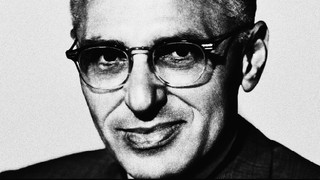
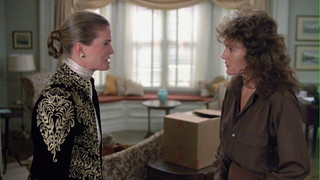
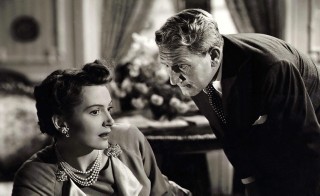
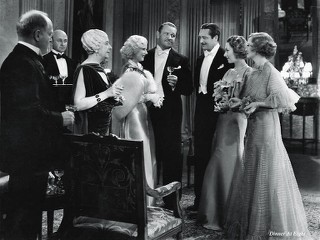
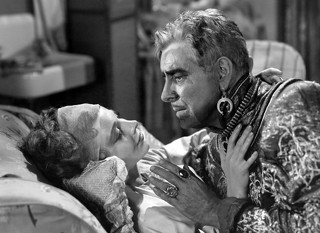
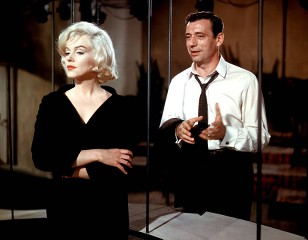
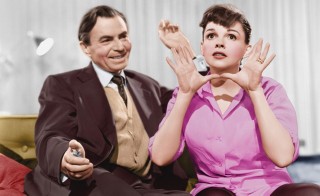

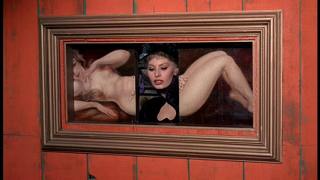
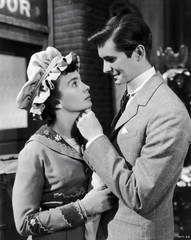
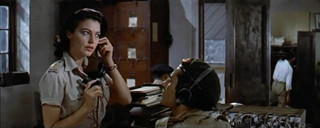
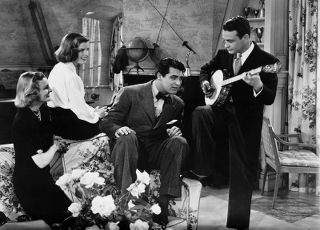
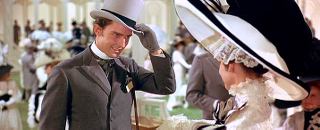

 Reply With Quote
Reply With Quote
Bookmarks